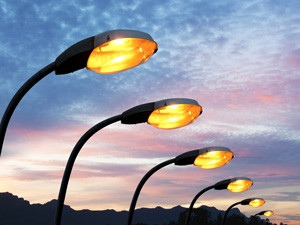
Competition is heating up between SA's two biggest mobile operators, as both aggressively push to boost capacity and speeds on their networks.
This week, MTN and Vodacom unveiled details about their infrastructure plans in Gauteng. MTN announced it is deploying antennas on street light poles around Johannesburg, to improve network coverage and quality, while Vodacom says it will invest R1 billion to bolster its network in the province.
Analysts describe the upgrades as a two-horse race for market share and network superiority between SA's historic mobile duopoly, with no clear leader emerging yet.
With networks under growing pressure, with ongoing consumer complaints around data and call quality issues, SA's cellular networks have to use everything at their disposal to meet demand amid infrastructure challenges.
However, this is happening against the backdrop of community newspapers carrying news of "residents up in arms" over the erection of cellphone towers, almost on a monthly basis. Vodacom spokesperson Richard Boorman tagged this as one of the biggest challenges operators face when it comes to upgrading networks.
Innovative solution
Relying on organic growth that will see existing base station sites being upgraded, Vodacom says a large portion of its R1 billion will be channelled to upgrade and increase Gauteng's 3G coverage in major townships. It plans to add over 400 new 3G sites, by the end of March 2015.
Vodacom is also growing its LTE footprint in the province, with 600 new sites going live by April next year. This will up the operator's LTE coverage in Gauteng from 25% of sites to 38%.
Meanwhile, MTN is looking at a more innovative solution to bolster its infrastructure, having signed a three-year deal with City Power to allow the utility to commercialise its infrastructure.
"The density of the buildings around west and northern Johannesburg has impacted negatively on network coverage and quality. This has compelled MTN to consider innovative ways of deploying its infrastructure due to the difficulties experienced in installing conventional base stations in these areas," says MTN.
MTN's deployment commenced this week with the installation of a pole site in Bryanston. The areas targeted include a number of suburbs in Randburg, Fourways, Bryanston and Saxonworld. The company expects to complete the first phase of the project in the next four months. The second phase of the project will be determined by customer requirements.
"The deployment of this solution will have immense benefits for our customers who will begin to experience improved network coverage, faster Internet speeds, better voice and data experience, and WiFi fall-back once users become mobile," says MTN CTO Eben Albertyn.
"The pole sites have a coverage radius of between 400m and 600m, and the number of poles installed will depend on customer density in the targeted areas.
"The smaller coverage footprint of these sites means the resources are shared and by less users, which gives an improved level of service and throughput."
He points out the pole sites can be used to cater to other services required by residents, including affixing security cameras and installing additional lighting. "This will also lay the firm foundations for future deployment of fibre to the home network."
Boorman says Vodacom is working with City Power on a light pole solution - as well as other approaches such as disguised chimneys, flag poles and billboards.
Natural progression
Considering the increasing difficultly for mobile operators to access base station sites, MTN's solution is a "loophole" in infrastructure utilisation, and a natural progression for operators seeking to bolster coverage and capacity, says Ovum analyst Richard Hurst. "This is one way of increasing capacity and coverage, and it's becoming a very interesting two-horse race between MTN and Vodacom.
"I still think Vodacom is more aware of the 'data tsunami' that is heading our way, but I don't think MTN is far off."
BMI-TechKnowledge director Brian Neilson says the MTN solution is based on established technology, which relies on existing copper as a conduit, together with a transmitter, to create tiny base stations. He says there are many reference sites around the world that MTN can draw on where similar solutions have been deployed successfully - with San Francisco being a good example.
"The biggest issue is that telcos are under constant pressure to provide better coverage and capacity. MTN's strategy is a well thought-out plan that gives them yet another channel to deliver services. In terms of commercialising City Power's infrastructure, this is money for jam."
However, Neilson says he would be curious to see the service level agreements between MTN and City Power, and which of the parties would be held accountable for service interruptions. "For instance, if copper cables get stolen, I can always buy a power supply, but I wouldn't be keen to let MTN off the hook if I suddenly don't have network coverage."
Hurst and Neilson say it will be interesting to see whether MTN runs afoul of any municipal bylaws as a result of the deployment.
Bringing up the rear
Third mobile operator Cell C says it continues "intensive investment" in its network: R2.3 billion in capital expenditure has been budgeted in 2014 and an additional estimated 2.1 billion budgeted for 2015. A total of 389 sites have either been rolled out or planned for this year, it says.
Cell C is in the process of swapping the radio access network equipment of over 1 500 sites from NSN to Huawei in a three-phase process, which should see the first phase concluded by November.
Earlier this year, Telkom Mobile signed a heads of agreement with MTN in a move that will see each party being able to roam on either operator's network when that deal is wrapped up.
Share